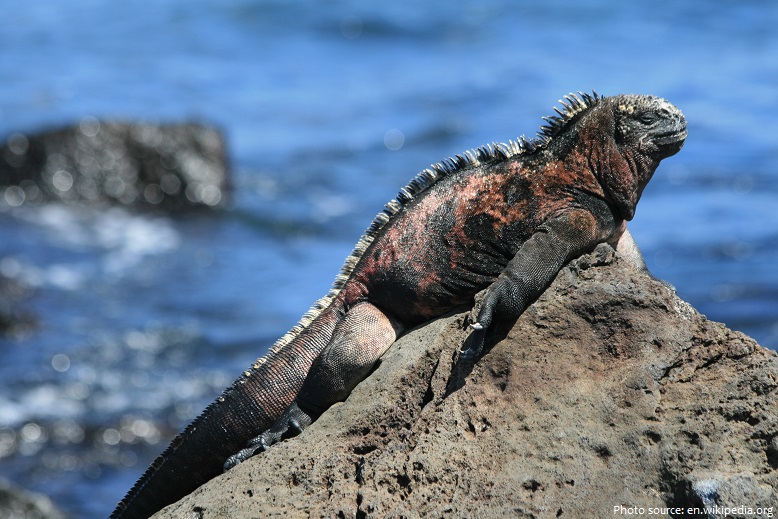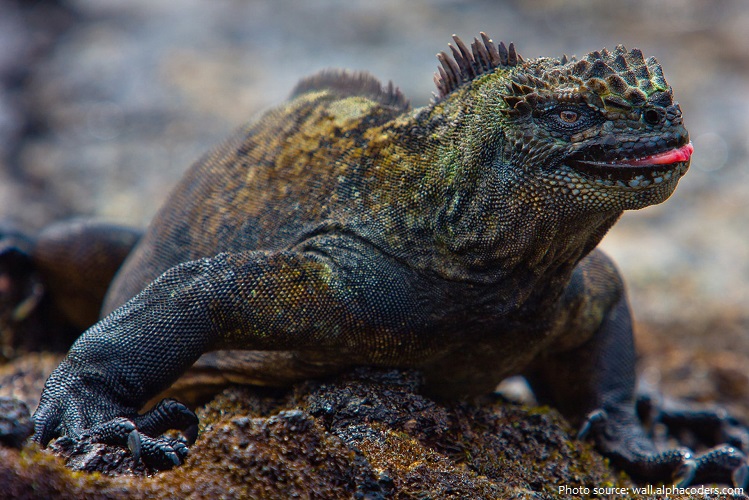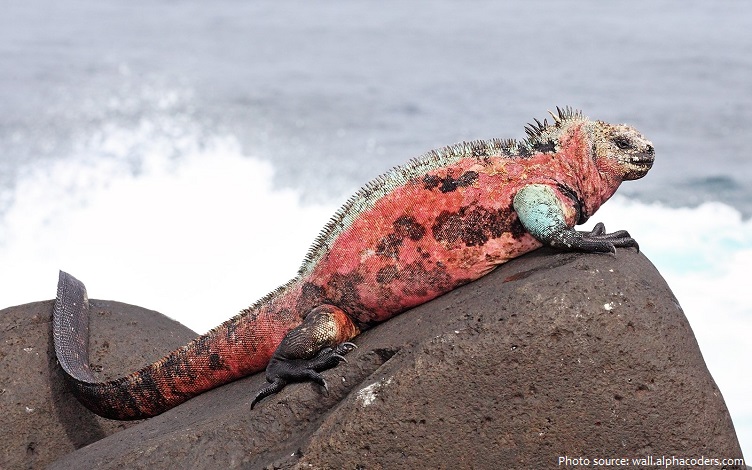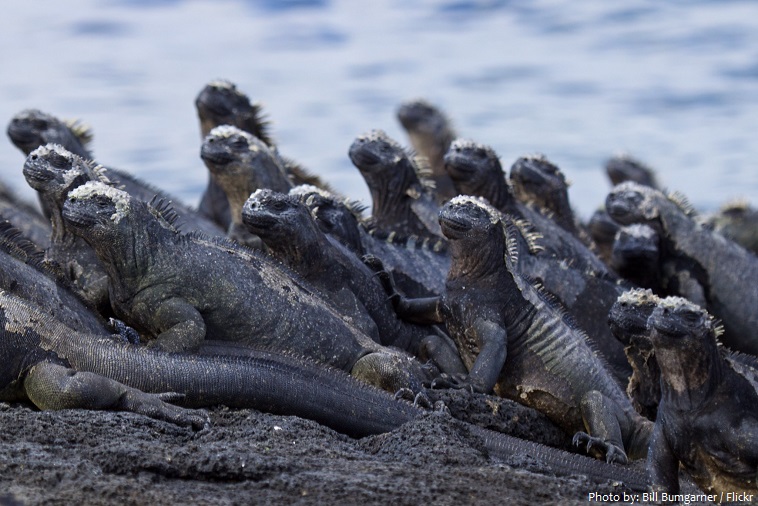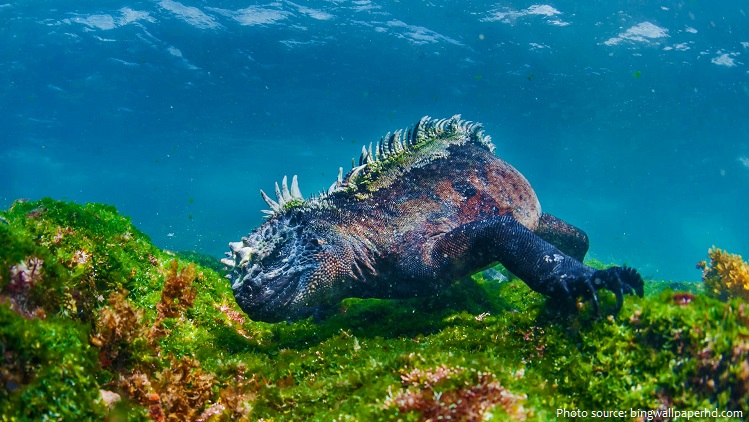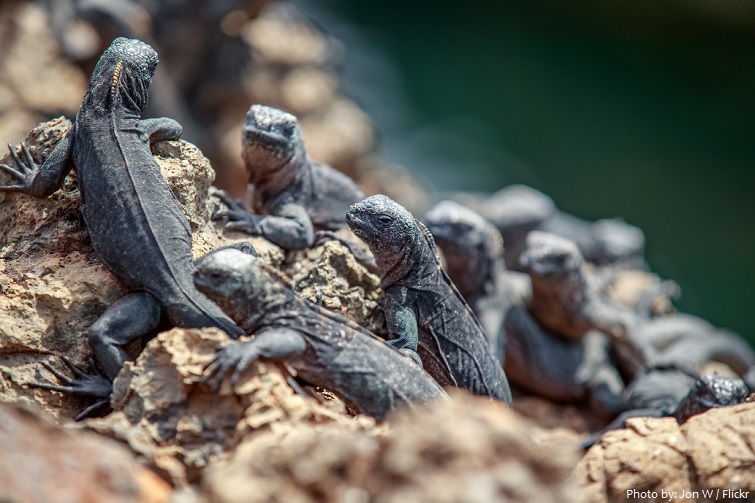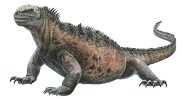The marine iguana also known as the sea iguana, saltwater iguana, or Galápagos marine iguana, is a species of iguana.
It is found only on the Galápagos Islands (Ecuador).
The marine iguana is the only modern lizard, to live and forage in the sea.
Also unusually, it is a vegetarian. This iguana feeds almost exclusively on algae, and large males dive to find this food source, while females and smaller males feed during low tide in the intertidal zone.
Marine iguanas mainly live in colonies on rocky shores where they warm after visiting the relatively cold water or intertidal zone, but can also be seen in marshes, mangrove and beaches.
They can reach an age of up to 60 years, but average is 12 years or less.
Marine iguanas typically range from 12 to 56 cm (4.7 to 22 in) in snout-to-vent length and have a tail length from 17 to 84 cm (6.7 to 33 in). The weight ranges from 0.5 kg (1 lb) to 12 kg (26 lb). There are major geographical differences, as iguanas from large islands tend to be grow relatively large as adults, while those from small islands are smaller in size.
Marine iguanas are distinguished from land iguanas by their short, blunt snouts and slightly laterally compressed tail which efficiently moves this lizard along the surface or beneath the water.
The long, sharp, recurved claws permit the lizard to hold fast to the lava in heavy seas or when submerged.
Marine iguanas range in color from red and black, to black, green, red and grey, depending on the island.
They live in colonies that typically range from 20 to 500 animals, but sometimes more than 1,000.
Marine iguanas can dive as deep as 30 m (98 ft), and can spend up to one hour underwater. When diving to 7 m (23 ft) or deeper, they regularly remain submerged from 15 to more than 30 minutes.
They are slow swimmers, averaging just 1.6 kilometres (1 mile) per second. The highest recorded speed is only about twice that figure and this can typically only be sustained in bursts that last less than a minute.
In general, each marine iguana has a specific feeding site it returns to day after day. Most feed daily, but large offshore feeding males often only every second or third day. During bad weather with high waves marine iguanas do not feed, sometimes for more than a week.
Marine iguanas sneeze 🙂 They sneeze because while they eat they swallow saltwater. Once they are back up on land they need to get rid of all that salt. They do that with the help of their salt-excreting glands. As they sneeze, out comes the saltwater.
Large males defend territories for a short period, but smaller males have other breeding strategies. After mating, the female digs a nest hole in the soil where she lays her eggs, leaving them to hatch on their own a few months later.
The hatchlings are 9.5 to 13 cm (3.7 to 5.1 in) in snout-to-vent length. As soon as they emerge from the nest they run for cover, and begin their trip to locations that provides optimum conditions for feeding, temperature regulation and shelter. Some hatchlings have been recorded moving as far as 3 km (1.9 mi) in two days.
The marine iguana has a relatively small range and is currently considered vulnerable by the IUCN.
The total population for the entire archipelago is estimated to be 200,000 to 300,000 individuals, although this number is labelled with considerable uncertainty.
The volcanic Galapagos has never been attached to another land mass so it is believed that iguanas floated out to the islands from the South American continent on rafts of vegetation.
Its scientific name is Amblyrhynchus cristatus. The word “Amblyrhynchus“, is a combination of two Greek words, Ambly- from Amblus (ἀμβλυ) meaning “blunt” and rhynchus (ρυγχος) meaning “snout”. The word “cristatus” is a Latin word meaning “crested,” and refers to the low crest of spines along the animal’s back.
